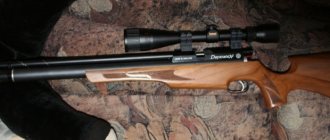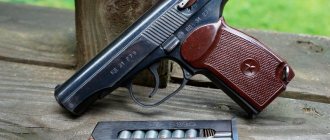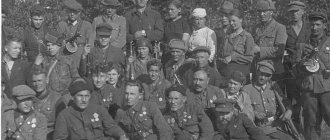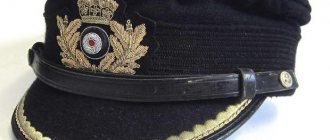Since the ancient Mongols lived in an environment where survival skills were always extremely important, the creation of excellent tools, both civilian and military, was inevitable.
One item that was of great importance both in wartime and in the daily life of the Mongols was their composite bow. This bow may not be as well known in the West as the classic English longbow, which was the best bow ever to come out of Europe.
But the old Mongolian bow was incomparably superior to everything that was known at that time in the West. Before the advent of firearms in the 1800s, the Mongolian bow was decisively superior to all known weapons in terms of firing range. However, the original Mongol bow remains a formidable tool for war or hunting, and people living around Lake Baikal regularly used these bows for hunting at least until the twentieth century.
Ideal design and dimensions
Mongolian bow - recurve:
- when the bowstring is pulled, the shoulders bend; Mongolian bow.
- complex - had a composite (made from different materials) structure, which includes many types of wood (the main part is birch), connected with bone glue;
- the weapon has horn linings on the inside and covered with veins on the outside;
- length on average reaches 160 centimeters;
- arrows about 90 centimeters long are used.
Weapon Power
In battles with the Mongols in the 13th century, Western troops (Hungarians, Crusaders, Polish and Czech warriors) were stunned by the fact that the arrow completely pierced plate armor if the knight was not covered with a shield.
In the official records of the Mongols there is information about the killing of game (roe deer) by Kulkan Khan (a Mongol military leader, the son of Genghis Khan by the Merkit Khulan, who died in the Battle of Kolomna) at a distance of about 400 meters.
The striking fact is not the distance itself, but the fact that the arrow, having flown such a path, hit the target.
The Mongolian bow is a powerful weapon.
Heavy arrows
The enormous power of the bow made it possible to use heavy arrows. The weight of some tips varies from 30 to 50 grams (for comparison, the weight of a regular arrow tip is on average 7.5 grams), and if you calculate the weight of the shaft, you get about 200 grams.
Powerful bow - huge arrows.
Military uses of the Mongolian bow
When we talk about Mongolian bows, the first thing that comes to mind is their military use, although hunting and target shooting were certainly more relevant and common. The Mongols did not have to fight every day, but they had to hunt and develop shooting skills every day, these activities were part of everyday life. However, we will start with the military aspect.
In the Mongol army, each horseman had two bows. One was intended for long-range shooting, the other for close-range shooting. In addition, each soldier had two quivers of arrows for different purposes.
Some of the arrows were armor-piercing - arrows with a particularly heavy tip made of hardened steel, there were also incendiary arrows for setting fire to buildings and inducing panic and fear in the enemy ranks, as well as whistling arrows for signaling.
The standard, according to James Chambers, was that each soldier should have at least sixty arrows.
By the way, it should be mentioned that the strongest and most courageous Mongol women fought bravely shoulder to shoulder with men. In addition, women who did not usually participate in hostilities still had to be able to shoot a bow, because this skill was necessary for both self-defense and hunting.
Specifications
The most important indicators of the capabilities of the traditional bow model in question are the size, speed of the arrow, and the tension of the string.
| Specifications | Traditional bow INTERLOPER Mongolian |
| Bow sizes | 105.9 cm x 35.9 cm x 27.3 cm |
| Initial speed of arrow flight | 87.9 m/s |
| Manufacturer country | Russia |
| Housing material | Fiberglass of increased strength and resistance to mechanical stress |
| Availability of arrows as standard | Yes - 4 pieces |
| Availability of additional casing braid | Eat |
| Manufacturer's warranty period | 5 years |
The long warranty period is determined by the reliability of the design and mechanism; the camouflage coloring attracts attention and ensures buyer interest in the model.
Shoulder gluing
A wedge-shaped notch is drawn on one of the shoulders (exactly on his back). The diagram can be found on the Internet. The cut should be 10-15 cm long. The marked fragment is cut out.
If something went wrong, it needs to be fixed. The second lever is sharpened for a cut wedge. First with an ax or saw, then with a wooden file. It is important to adjust both shoulders so that (when viewed from behind) they form a straight line.
You can help yourself by drawing an axis of symmetry on them. Then three nails are driven superficially along these axes: one near the future connection and two on the griffins.
If all three “coincide” with each other, the arc is straight. Epoxy resins are best suited for gluing. After joining, everything is twisted using carpenter's clamps or rope or twine.
Principle of operation
The principle of operation of classical bows (both traditional simple and recurve) is based on the creation of a pushing force that is imparted to the bowstring when the shoulders are straightened and provides the arrow with an initial speed that depends on the tension force. Moreover, the initial speed of the boom in a simple design also depends on these factors, while in block models, eccentrics located at the ends, synchronized with each other by a system of separate cables, are responsible for accuracy and speed.
A professional compound bow is made mainly from expensive and high-strength materials (carbon and fiberglass, magnesium and aluminum alloys, etc.) and contains a separate optical sighting system. In this regard, it is extremely difficult to make such a device yourself, and most importantly, very expensive. Therefore, further we will consider the assembly of hunting bows only of the classical type - both simple and complex recurve ones.
Wood harvesting
It is better to harvest wood to make a hunting bow with your own hands in winter, at a temperature of -10 degrees or slightly lower. If you look for a suitable rod in the fall, you won’t have to wander through the snowdrifts in search. It is necessary to cut it, the length of the rod should be several tens of centimeters greater than the expected length of the bow. This is necessary, since when drying, the ends of the rod may crack.
Before making a bow, the wood must be dried for a long time, on average three months is enough. A room with room temperature in which the rod needs to be hung is suitable for this.
In this case, there is no need to remove the bark, but it is better to paint or coat the ends with varnish, which will not allow moisture to evaporate, then the future arc will dry evenly along the entire length. A rod that has a slight curvature can be straightened over steam.
In camping conditions, drying can be quickly done using a fire; the main thing is to do it carefully, do not put the wood too close to the fire and not overdry it. Such onions will be more fragile and less durable than those dried at room temperature.
Decoration
A bow must first shoot well and only then look good. Therefore, you should wait a little with decoration. It's better to shoot and test the bow first.
It is possible that after a while you will have to make small changes. Its handle and griffins can be shaped using a sharp knife and small files.
Alternatively, leather tape or linen cord can be wrapped around the handle to disguise the gluing area. One of the decoration ideas is to make an original inscription on the shoulders.
Good. The wooden arch with your own hands is ready!
How to make a bow with your own hands - designs, sizes and detailed description of how to make a weapon
Surely many would like to have a bow and arrows made with their own hands. In this article we will tell you how to make this dream come true.
Preparation of material
The arch will be made with your own hands from acacia (can also be ash or elm) with a trunk diameter of about 15 cm and a length of at least 1 meter.
It would be nice if the barrel was a little thicker. This will make it easier to “find” the shoulders of the arch in the body. The trunk should be fairly straight, not twisted, without knots or branches.
This "trunk" can also be a large branch. If someone has access to a two-meter log that meets the above conditions, they might be tempted by a bow made from a single piece of wood. Then he will skip the gluing step.
What other wood is used
For production you can take ash, rowan, willow, juniper, oak, birch. It is recommended to cut the branch in winter after frost. Before making a bow and arrow, it is necessary to determine the opening of the future shooter's hand.
Cutting a branch takes longer than cooking the onion: the broth can be up to 30 cm. A branch 3-4 cm thick should be flat, without knots. Wood plays an important role in how to make a bow and arrow with your own hands.
Barrel processing
So where to start making onions with your own hands? With barrel processing. Below are instructions.
The trunk should be cut with an ax so that it has straight cut ends, which should be painted with rubber paint. This will allow you to monitor the wood as it dries and possibly prevent cracks from occurring.
The trunk is then cut in half. If there is a knot, the cutting line should intersect it. This requires 2 wedges and a hammer. The ax can be used as a wedge, but understand that the ax can be broken. A wedge is inserted into the thicker end of the barrel.
When the wood breaks, a second wedge is inserted into the crack to free the first. These steps are repeated until two strips of wood are obtained.
Note. If the trunk breaks asymmetrically, it should never be “straightened.” It is possible that one of the parts will no longer be useful for anything and will have to get rid of it.
The bark is removed with a sharp ax (or other tool, such as a plane). After this, the tree is placed in a dry and cool place.
The main idea behind these steps is to dry the wood slowly and evenly. In the notes of the old masters it was written that the target humidity should be 10%. If you have nothing to measure, you will have to trust your instincts.
The above mentioned events can also be separated from each other by a break of several days. There's no rush here. Drying should last at least 2 months.
After about 5 weeks, you can gradually move on to the next stage. The wood is still too wet, but removing any unnecessary excess will speed up the drying process a little.
If during this time the pieces of wood begin to become covered with white mold, they should be placed higher in a drier place so that they do not collect moisture from the soil. If cracks appear during drying, the wood should be moved to a cooler place. The reason for these shortcomings is the lack of bark on the trunk.
Next, the most beautiful piece of wood is selected. Now you can get started; When making a compound bow with your own hands, the steps may vary.
"Finding" the arc
The base surface is the part of the tree without bark. This surface is processed to a minimum.
Another thing to pay attention to is the rotation of the barrel. A twisted barrel is not suitable for bows. You can try to make corrections, but the chances of success are low.
After determining the position of the bow arms, a dividing line is drawn between them. The shoulders need to be separated so that they can be connected again, but in a slightly different way. The trunk is cut with a saw.
An ax or plane removes fragments that are definitely not useful. Leave to dry further. You can’t be too zealous here, as a very thin block will warp when drying.
You need to leave a little more material at the ends, which will serve as a connecting piece. If you plan to make carved griffins, this must also be taken into account when planing, leaving an appropriate allowance.
It should be understood that this piece of wood once lived its own life. And now it needs to be revived, but in the form of an arch. All steps need to be done slowly and carefully to make a bow with your own hands.
Shoulder gluing
A wedge-shaped notch is drawn on one of the shoulders (exactly on his back). The diagram can be found on the Internet. The cut should be 10-15 cm long. The marked fragment is cut out.
If something went wrong, it needs to be fixed. The second lever is sharpened for a cut wedge. First with an ax or saw, then with a wooden file. It is important to adjust both shoulders so that (when viewed from behind) they form a straight line.
You can help yourself by drawing an axis of symmetry on them. Then three nails are driven superficially along these axes: one near the future connection and two on the griffins.
If all three “coincide” with each other, the arc is straight. Epoxy resins are best suited for gluing. After joining, everything is twisted using carpenter's clamps or rope or twine.
The seam reaches maximum strength in a week, but the arch can be worked on in two days. After gluing, it is recommended to check whether the arms are offset relative to the axis. The previous model is used for correction.
Excess wood outside the lines drawn on the template is removed. A second model is drawn showing the thickness of the shoulders. If your shoulders are bent, this line is best drawn with a ruler. After submitting the application, the premium is removed. Traditionally, you can use a plane, saw or axe.
In this form, the arch should resemble a rectangular strip. The surface of the convex was rounded with a file so that the cross section was shaped like the letter “D”.
Slowly but surely the process of creating a combat bow with your own hands is progressing.
Arc formation
To form it, you will need a beam of approximately 10x10x100 cm; a homemade crossbow and a future arch are made from this beam. To do this, “thresholds” are made on the bar, cutting them every 5 cm along the entire length. They must be deep enough to hold the rope.
Instead of thresholds, you can nail short nails that will perform the same function. The end on which the bow hilt rests is inserted into the saddle so that the bow is firmly attached to it. In one set, the string is made approximately 10 cm longer than the bow.
The “crossbow” is attached by pulling the bowstring onto the griffin, and the bow handle rests on the crossbar saddle. Gradually he moves on to the next “thresholds”, looking around the back of the arch. If you bend more, it means it is weaker. Then the next file is archived.
The shoulders should bend evenly along the entire length, except for the handle. Otherwise, the hardest parts of the shoulder are sawed off. Throughout the process, it is necessary to maintain the arch and not stretch it to its maximum length before it is formed. Of course, only the convexity, that is, the inner part of the shoulder, is processed.
Very often it turns out that the formed arc is too difficult for the archer's skills. To reduce the pulling force, it is necessary to trim both arms evenly from the middle side and reshape the bow. Then measure the voltage again. And so on until the end.
At the end of the work, the file is replaced with increasingly fine-grained sandpaper. The operating time will, however, increase, but the effect will exceed expectations.
This phase is perhaps the most tiring of all, and at the same time the most difficult, because without “getting used to” bending the bow, it can break.
Bowstring
An ideal bowstring should be thin, strong and not stretchable. The thinner the string, the better the bow's performance. However, it must withstand arc voltage of more than 7 times. The best material in terms of availability, price and parameters is the so-called dratva linen.
Practice shows that a drape folded 8 times can withstand a load of up to 25 kg. You can reduce the number of fibers to obtain better parameters, but this increases the risk of string breakage and, as a result, bow breakage.
You should remember about strengthening fragments that work with an arrow (sleeve) and griffins (rings). In these places the bowstring most often breaks. The bowstring has one or two rings.
In the case of two rings, it must correspond to a certain arc length. Once he has it, the archer ties the free end to the crossbar, drawing the bow. Thus, he has the ability to adjust the degree of deflection of the bow.
Here the terminology is noteworthy: the archer draws the bow, threading the string, and draws it back, preparing to fire.
There are many ways to weave fibers. Examples can be found on the Internet.
Service
Do-it-yourself wooden arches are very sensitive to moisture and must be protected from moisture. Otherwise, it may become permanently deformed. In turn, it should not be overdried (for example, over a chimney), otherwise it will dry out and may crack.
Modern wood paints effectively prevent the exchange of moisture with the environment and are recommended for people who have limited choice of storage space. However, experienced experts say that the onion must “breathe”.
To make this possible and at the same time protect it, the raw wood is regularly rubbed with warm linseed oil. However, this is a dirty job that needs to be repeated periodically.
What other options
An intermediate solution when caring for onions at home can be painting the onions with linseed oil. The aroma is not very pleasant, but it is excellent as an impregnation. However, after 24 hours the smell disappears.
Regardless of the chosen method, archery accessories must be protected from dust and moisture; Wipe them with a dry cloth from time to time.
Decoration
A bow must first shoot well and only then look good. Therefore, you should wait a little with decoration. It's better to shoot and test the bow first.
It is possible that after a while you will have to make small changes. Its handle and griffins can be shaped using a sharp knife and small files.
Alternatively, leather tape or linen cord can be wrapped around the handle to disguise the gluing area. One of the decoration ideas is to make an original inscription on the shoulders.
Good. The wooden arch with your own hands is ready!











